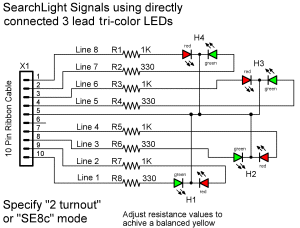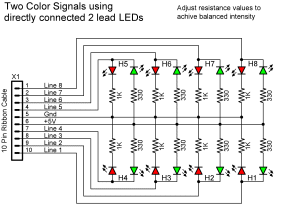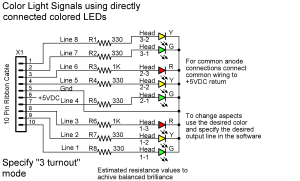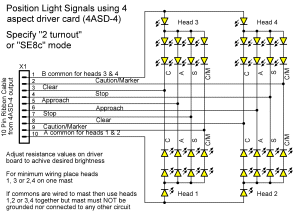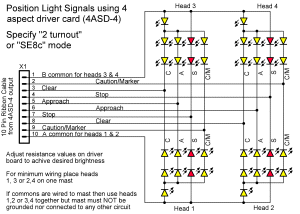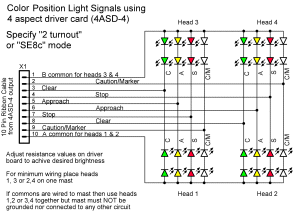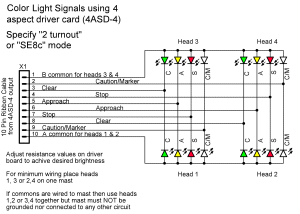Direct drive options:
Searchlight Signals
The simplest and most cost efficient option for signals is to use three
wire dual color LEDs to create searchlight style signals. The three wire
LED design allows both the red and the green portion of the LED to be
illuminated independently. If the LED has both color chips located close
to each other and the brilliance of the two colors are well matched then our eyes will
see yellow when they are both illuminated at the same time. This visual
multiplexing allows us to drive 4 heads, each with 3 aspects plus dark,
from each output port.
2 wire bi-polar LEDs have also been used, but their operation is more complex because their polarity needs to be reversed to change from red to green and their polarity must be rapidly switched with a variable pulse width to achieve a proper yellow. Further there is only a saving of one wire, the common return, over the use of three lead LEDs.
Two Color Signals
Direct drive of dual LEDs is
possible for users with simple two color signals. In this case 8 dual color
signals
may be
controlled
directly from each output port. The color changes from red to green as
the output lines change between high and low. LEDs must be individual LEDs,
contrary
to the first schematic I posted which also showed using bi polar LEDs. (updated
28 Sept, 06)
Panel Indicators
Panel indicators will usually be directly driven from
the outputs of a Tower Controller located behind the panel.
For dual color indicators use the same wiring
shown here for the direct drive two color signals. To drive single
color LEDs just use single resistors and single LEDs. For three
color
panel
indicators
use the same circuits that are used for line side signals.
